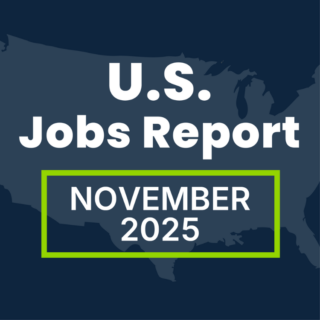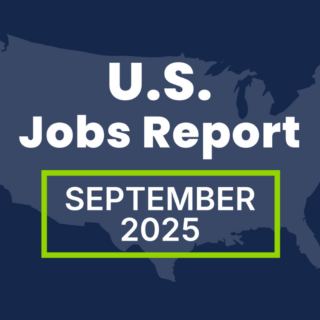From the first African slaves brought to the shores of the American colonies in the 1600s to the present day, African Americans have an active and intricate role in the history of labor in the western hemisphere and beyond. African Americans have filled a wide range of roles vital in building and sustaining the nation’s economy, even in the face of racial discrimination and persistent challenges.
Yet African Americans have often found themselves availed with few economic and career resources of their own, historically restricted to lower-paying sectors of the economy. Moreover, despite improvements in workplace diversity, African Americans have faced a long history of workplace discrimination as employees and job seekers continue to face obstacles.
At PeopleScout, we are committed to providing you with information to help guide you on your DE&I journey. We aim to cover a wide range of DE&I topics, including issues regarding BIPOC, the LGBTQ+ community, gender gaps, people with disabilities and more. In this article, we cover the history and experiences of African American workers and offer advice and recommendations for employers looking to build more inclusive workplaces.
The Complex Legacy of Slavery and African American Labor

In the 17th century, to meet the expanded labor needs of the rapidly growing North American colonies, European colonists who depended primarily on indentured servants from Europe opted for a cheaper and more plentiful labor source, African slaves.
Historians estimate that up to 12 million African slaves made the middle passage during the trans-Atlantic slave trade. Following the Revolutionary War, the rural South’s demand for slave labor increased due to rising cotton production supplanting traditional cash crops like tobacco and sugar. The South’s demands for slave labor and growing calls for abolitionism in the Northern led to decades of political and social tension.
In 1861, the tensions between North and South erupted into civil war in America. On January 1, 1863, President Abraham Lincoln’s Emancipation Proclamation made it official that enslaved “shall be then, thenceforward, and forever free.” By freeing 4 million enslaved African Americans, the Emancipation Proclamation dealt a blow to the Confederate states’ labor force.
The Union’s victory in the Civil War granted 4 million African slaves’ freedom and in 1865, the 13th Amendment officially abolished slavery. Unfortunately, significant obstacles to full enfranchisement laid ahead during the Reconstruction era.
Racial Discrimination in the Workplace: The Emancipated Black Worker, Sharecropping and Black Codes
After the end of slavery, Southern legislators passed a series of laws also known “Black codes” intended to bar African Americans from skilled trades. While Northern states outlawed similar practices, white craftsmen resisted accepting Black workers into trade work. These restrictions on ex-slaves made them reliant on their former owners for work as landless sharecroppers.

Sharecroppers exchanged their labor for tools, seeds, fertilizer, and access to land to harvest their crops. While having more independence than during slavery, sharecroppers paid substantial rent, interest and also turned over a large portion of the crop to their landlord.
To escape the the racial discrimination and oppression of the sharecropping systems and Jim Crow laws of the south, many black families migrated west and north in search of better-paying jobs in manufacturing and professional roles. However, many Black migrants were excluded from professional trades and manufacturing jobs, often confined to unskilled labor or domestic service.
A History of Progress in The Face of Racial Discrimination:
- 1619 First African Slaves Brought to the New World: A Dutch ship brought 20 Africans ashore at the British colony of Jamestown. In the years to come, slavery spread quickly through the American colonies.
- 1865 The Thirteenth Amendment Abolishes Slavery: The end to official slavery was perhaps the greatest labor victory in U.S. history, yet the struggle for equal rights was far from over.
- 1866-1877 Reconstruction Era: During the Reconstruction era, the thirteenth and fourteenth amendments to the constitution ended slavery and granted citizenship to African Americans. Unfortunately, Reconstruction did not produce economic equality for millions of newly freed men and women.
- 1881 Tuskegee Institute Founded: Booker T. Washington became the first principal of Tuskegee Institute in Tuskegee, Alabama, on July 4. Tuskegee became the leading vocational training institution for African Americans.
- 1925 Pullman Company Porters form the Brotherhood of Sleeping Car Porters (BSCP): The first all-Black labor union in the U.S. formed in 1925 to address low wages, long hours and mistreatment from passengers. By 1935, the BSCP was the first African American union organization to be granted membership into the American Federation of Labor.
- 1941 Black Activist Desegregate Defense Industry: In 1941, A. Philip Randolph, head of the BSCP along with other Black labor activist successfully leveraged their political organizing efforts to lobby President Franklin D. Roosevelt to end racial segregation in the defense industries.
- 1961 Executive Order 10925 Establishes the EEOC: In 1961, President John F. Kennedy set forth Executive Order 10925, which established the President’s Committee on Equal Employment Opportunity, or EEOC. Kennedy’s order not only made it unlawful for government contractors to discriminate, but also gave the EEOC the right to impose sanctions on any organization which violated the spirit of civil rights laws.
- 1964 The Civil Rights Act of Outlaws Workplace Discrimination: Dr. Martin Luther King Jr. and other major figures of the civil rights movement successfully petitioned for the Civil Rights Act of 1964.
The view of African American labor as first enslaved, then free, changed when the modern civil rights movement helped expand the scope of American democracy and the rights of all.
Racial Diversity and African Americans in the Modern Workforce
African Americans continue to face both explicit racial discrimination and more subtle forms of discrimination in the workplace. According to a survey conducted by Gallup, 72% of Black professionals have experienced racial discrimination in the workplace—a higher percentage than all other ethnic group surveyed.
Although companies claim they want to overcome these explicit and implicit biases and hire and promote diverse candidates, they rarely do so in effective ways. In this section, we outline ways in which employers can address racial inequality as well as better support and promote inclusion for their African American employees.
African American or Black?

Racial identity can be very personal, and the language employers use to refer to a person’s race is a reflection of that. “Black” and “African American” are not always interchangeable. African American is typically used to refer to descendants of African who were enslaved. Some individuals prefer the term Black because they do not identify as African or because being Black about more than about race, it may also carry cultural meaning as well.
Moreover, some people identify as Black and African American and use the terms interchangeably for themselves, depending on the situation. Whether someone prefers “African American” or “Black” is very much up to the person, so it is always advisable to ask an individual which term they prefer.
Employee Resource Groups Can Help Support African American Employees
Being African American in the workplace can be emotionally taxing. Research by the University of Virginia shows that because Black employees feel a strong sense of difference between themselves and their mostly white peers, and as a result their ability to contribute is diminished. This sense of isolation can take a toll.
Creating employee resource groups (ERGs) is an approach you can use to build a more inclusive environment and addresses diversity and inclusion in a more holistic, community-based way.
The first employee resource groups were initially workplace affinity groups created in response to racial strife of the civil rights era. Joseph Wilson, the former CEO of Xerox, developed the concept following race riots in Rochester, NY in 1964.
ERGs can empower underrepresented groups by giving each group a voice to discuss issues with decision-makers and leadership. ERGs support learning and development by offering formal and informal leadership opportunities and creating visibility for employees who are active. ERG groups provide resources and guidance for cooperate leadership regarding diversity issues, community needs and policy.
Discrimination in the Workplace: Systemic Inequality and Corporate Culture
Often, Black employees report feeling less supported, engaged and dedicated to their employers than their non-Black coworkers. Many employers create diversity and inclusion programs to help improve the day-to-day experience of employees, however, many initiatives often fall short.
The problem? Many DE&I programs tend to focus on helping employees from marginalized and underrepresented groups fit into the status-quo company culture and do not take enough action to remove systemic barriers to equality within their organizations. Organizations can start by leveraging data analytics to assess whether employees feel included on their teams and are treated equitably within the organization at large.
To collect diversity information on their workforce, employers should refer to EEO data collected for compliance obligations. Once the diversity data is collected, it should be compared to the data available on the labor market. Employers should look for gaps in diversity and then draft a plan to hire and retain more members of underrepresented groups.
Support African American Employees in Being Themselves

Members of underrepresented groups often feel pressure to conform, suppressing personal values and feel uncomfortable bringing their whole selves to work. This can lead to a particular struggle with feeling inauthentic at work. Research by McGill University shows that the pressure to create “facades of conformity” to fit in with the culture of their employer.
African American employees might straighten their hair or “finetune” their résumés by deleting ethnic-sounding names or companies. They might suppress emotions related to racism in the workplace and in the world at large.
Employers should assess how much of themselves their Black employees feel comfortable bringing to work. Here we outline a few ways leaders can encourage employees to bring their true selves to work:
- Leaders should listen to everyone and incorporate the views of their diverse workforce to improve the exchange of ideas, perspectives and values.
- Encourage Black employees to speak up for racial and cultural authenticity and to be seen as individuals who are unique for reasons other than their ethnicity.
- Create mentoring opportunities to empower Black employees to share their true selves at work rather than learning to conform to cultural expectations.
Another challenge African Americans face in the workplace are the politics of respectability. Respectability politics refers to attempts by marginalized groups to control the behavior of their own members to show the groups social values align with mainstream values instead of challenging the status qou for its failure to accept difference. Respectability politics narrow the parameters of the Black experience, and can denying employees the opportunity to be their truest selves.
Sourcing African Americans Candidates
Recruiters may come with their own set of unconscious biases that may manifest as racial discrimination when hiring, hurting an organization’s efforts to source diverse candidates. Implementing technology into the recruitment process can help decrease the unconscious bias that may take place during recruiting.
For instance, if you find that there’s a large drop in minority candidates moving between the onsite interview and skills assessment, unconscious bias training may be in order. Follow your data closely so you can make more informed decisions and continue making progress on your organization’s diversity, equity, and inclusion goals. What’s more, you should also build a team of recruiters who hail from a wide range of backgrounds.
There are also websites and job boards such as Jopwell that allow recruiters to advertise open roles to a talent pool that is full of diverse candidates so you can source from a variety of different places. Don’t rely on the same sources over and over again when seeking out new candidates. Focusing on only the sources that you know best can result in a talent pool of similar candidates and a lack of diversity.
Moreover, employers who are intentional about increasing African American diversity should look to Historically Black Colleges and Universities (HBCUs) who produce nearly 20% of all the African American college graduates.
Organizations can partner with these schools to find promising entry-level employees with not only the necessary skills and education, but also the drive to make an impact early in their career. With the rise and ease of virtual career fairs and other ways to engage job seekers, it’s easier than ever to access these highly desirable candidates.
What’s more, HBCUs provide to their students with career guidance and support to prepare them for the workforce, making these institutions an ideal place to recruit early talent. With an emphasis on mentorships, internships, and other ways to participate actively in the larger community, HBCUs prepare students for life outside the classroom while offering a safe, nurturing, and inspiring environment—a place to thrive.
How Employers Can Help Make Racial Discrimination in the Workplace a Thing of the Past

Despite increasing corporate investment in DE&I efforts, African Americans continue to face major barriers to advancement in the workplace. Now more than ever before, organizations and society should strive to benefit from the experiences, knowledge, and skills of all, not just a few. Organizations that understand racial discrimination, the reality and history of the African American experience will be better able to embrace and champion policies and programs that help to level the playing field. This will be hard but rewarding work that helps not only African Americans, but also the entire workforce and society at large.




